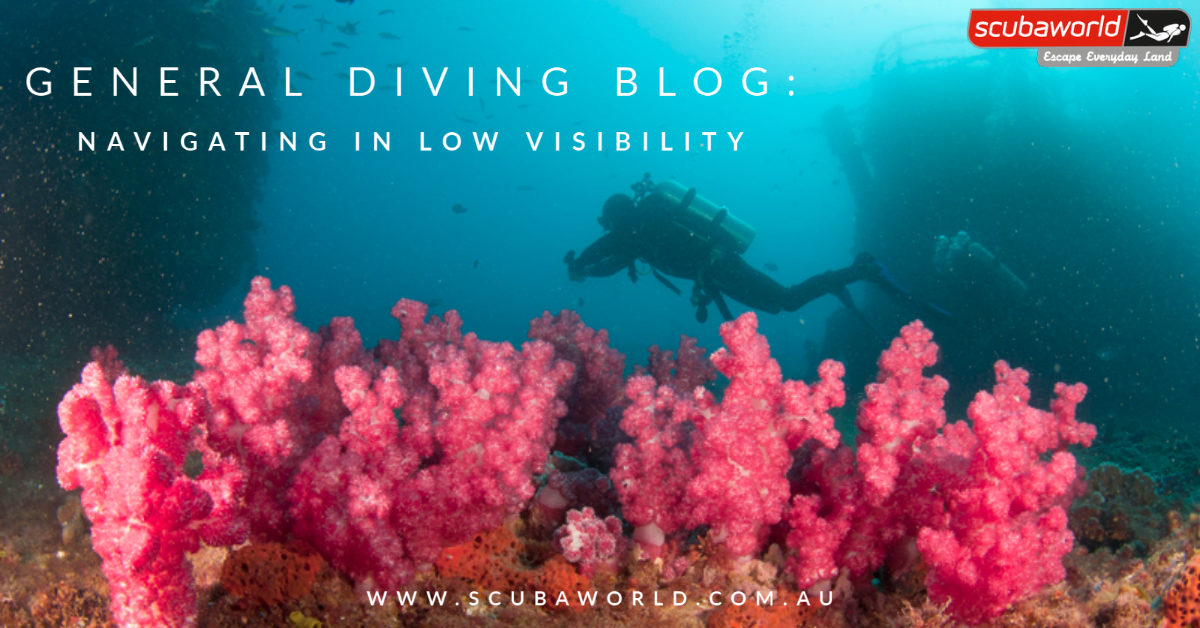
Why Scuba Divers Should Try Freediving: A Personal Perspective from an Scuba diving and Freediving Instructor
Hey everyone, I’m Matt, co-director of OceanSense Freediving here on the Sunny Coast. Over the

Have you ever descended the line and thought “oh sh!t I can’t see a thing!”? If you have, you would know the anxious feeling you get. Before you know it, the dive is over and you’ve spent your whole dive stressing out trying to figure out where you are instead of enjoying yourself.
It happens to the best of us, so here are a few tips that can help you enjoy your dive in low visibility.
1. Keep it simple
This is the MOST IMPORTANT TIP. Simple is best. If you are not with a guide, DO NOT swim too far from the anchor. A good rule is 4 times the visibility. If the vis is 5 metres then swim 20 metres maximum from the anchor. Ensure you come back to the anchor every 5-7 mins. Then choose a different direction. Using the anchor/mooring as a point of reference is so much easier. After 30 minutes you would have covered quite a lot of area, then you will have your bearings.
2. Don’t be afraid to pop up for a look
If you think you are lost, you probably are! There seems to be a negative stigma about coming up during your dive to take a bearing… honesty if it keeps you on track to navigate back to the anchor, it’s better than popping up 100’s of meters away from the boat and having to be picked up. This only works if own a compass and know how to use it. Never come up alone, both people in the group need to ascend and descend together. If you come up alone in low vis, you have essentially lost your buddy (you would then need to perform the lost buddy procedure).
3. Don’t be afraid to ask for a guide
If you’re not quite up to the challenge of navigating in low visibility, you can always ask to be put with a guide, or sit the dive out. Relaxing on the boat is a lot better than getting stressing out on the dive because you are lost.
4. Last resort – running a line
Running a line can be dangerous if not done correctly. Ask one of the staff before you attempt to do this yourself. A line that is not tight can cause entanglement. Never tie the line to the anchor or anchor rope! Anchors can drag, which will snap your line, and now you don’t know where you are. Also, never attach the line to your BC.
5. Additional training
Enroll in our Night & Limited visibility or Navigation course. We generally run these every two months and it’s a great way to learn something new and test out your skills.
Happy Diving,
Adrian Fields
3000+ dives
Diving since 1996


Hey everyone, I’m Matt, co-director of OceanSense Freediving here on the Sunny Coast. Over the
Join us Thursday 30th Jan at 5:30pm to hear David Mullins talk about nudibranch defences
Dear members, I would like to take this opportunity to inform you about a few